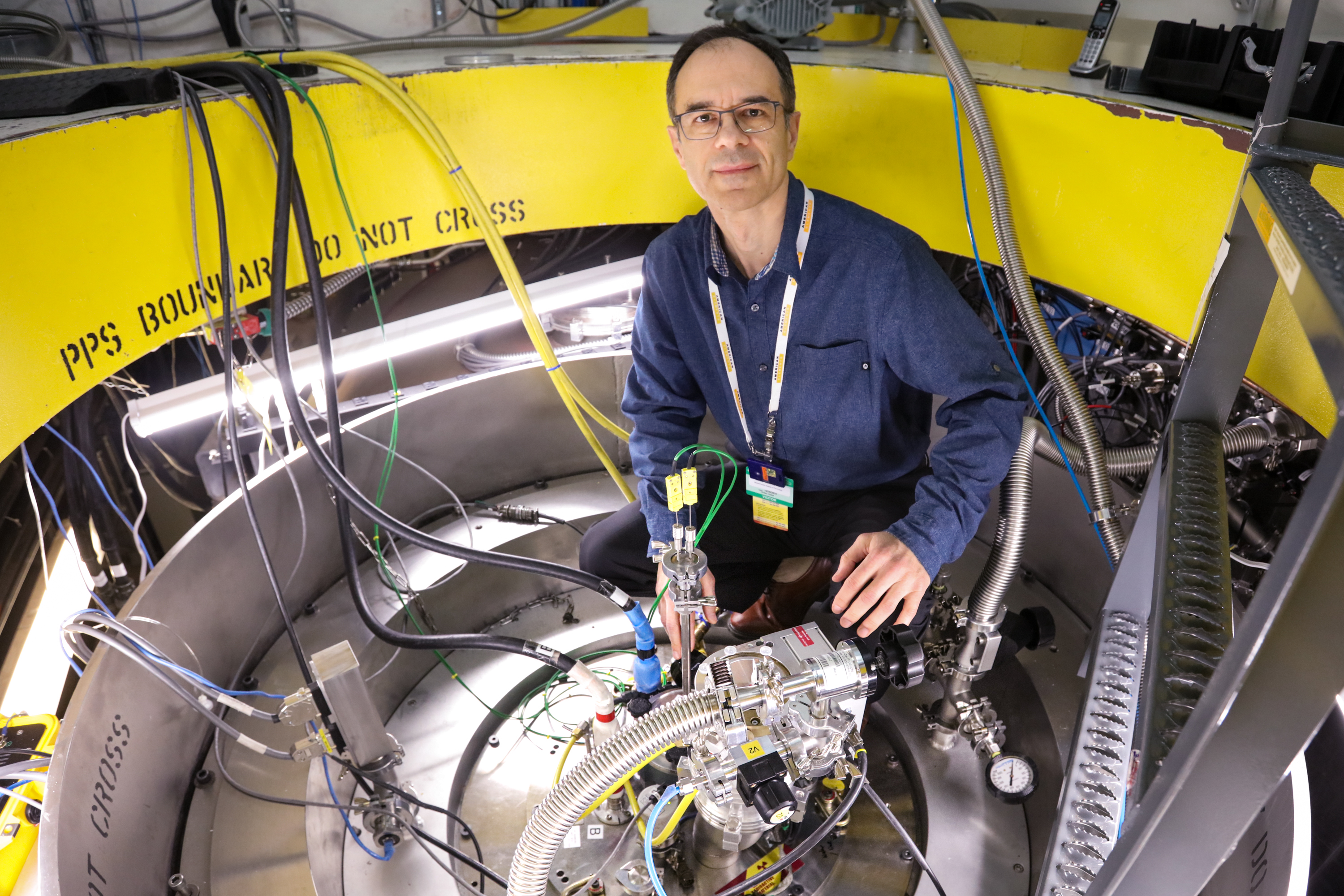Molten salt reactors could become a cornerstone of the future nuclear energy industry, allowing companies to generate carbon-free power in a safe and efficient way. But first, researchers have to better understand how salt solutions behave in nuclear environments.
Boris Khaykovich, an experimental physicist from the Massachusetts Institute of Technology (MIT), used neutron scattering at the Department of Energy’s (DOE’s) Oak Ridge National Laboratory (ORNL) to test salt solutions that could help his fellow scientists do just that. His work explores the fundamental chemical and physical properties of salts at high temperatures. With the collected data, he can create high-fidelity models that predict how salt solutions might perform in the intense environment of a molten salt reactor.
Khaykovich says the models could prove invaluable to nuclear engineers working to commercialize molten salt reactors for power production. He hopes the information from the experiments will enable him to help colleagues design salt solutions and create diagnostic tools tailored for operating molten salt reactors.
“Molten salt reactors could help us harness nuclear power in a better way. This research will provide engineers with new tools for designing and constructing these devices,” said Khaykovich.
Nuclear reactors work by harnessing heat from nuclear fission to boil water and generate steam, which passes through a turbine to drive a generator that produces the electricity. Boiling water reactors do this by boiling water directly in the reactor vessel, whereas pressurized water reactors boil water in a separate loop of high-temperature water under high pressure. Pressurized water reactors account for about 65% of all nuclear energy produced in the United States.
It is here that molten salt solutions could be useful. Rather than relying on ultra-hot water, which must constantly be kept under high pressure, nuclear reactors could instead use molten salts. Molten salts can be brought to extremely high temperatures without boiling. This allows them to generate electricity more efficiently, using low-pressure components, to potentially produce lower-cost electricity than pressurized water reactors.
“To build molten-salt reactors, we need to understand exactly how salt solutions will behave in nuclear environments,” said Khaykovich.
He explained that some salt reactor designs include dissolved nuclear fuel, such as uranium, in the circulating salt. As the fuel undergoes fission, it produces new compounds, most of which will also dissolve in the molten salt solution, changing its composition and potentially changing its behavior. Engineers need to know exactly how salt solutions will affect—and be affected by—operations in reactor systems.
“These are the fundamental issues we need to solve before commercializing molten salt reactors. How, at the basic level, will fuels and fission and corrosion products alter salt solutions? And how will changing salt compositions alter reactor behavior? We have to have answers to these questions as we design molten salt reactors,” said Khaykovich.
To find the answers, Khaykovich used the NOMAD instrument at ORNL’s Spallation Neutron Source (SNS). NOMAD features high-temperature sample environments that allow samples to be heated to over 1500°F before they are studied with neutron diffractometry. Neutrons are perfect for this kind of research because they are particularly sensitive to chromium-52 and chromium-53, prominent isotopes in the salt samples.
Using NOMAD, Khaykovich was able to see how each positively charged chromium ion attracted six negative chlorine ions to form the octahedra network in the solution. As a result of the chromium-chloride attraction, chlorine ions are on average closer together than they are in pure molten sodium chloride, he explained, whereas the environment around sodium ions is unaffected by chromium and looks on average like it does in molten sodium chloride.
He noted, however, that chromium will not be added to the salt solutions of molten-salt reactors deliberately. As it is an undesired impurity, chromium will instead be dissolved into the melt as a result of corrosion, which is why understanding the effects of the impurity is important.
“Chromium-52 has a positive neutron scattering length, meaning neutrons are repulsed by the isotope. Chromium-53, on the other hand, has a negative neutron scattering length, which means it attracts neutrons,” said Khaykovich. “By including both isotopes in salt solutions, we can generate a comprehensive set of diffraction peaks that provide important insights into how chromium interacts with other constituencies in the melt, which can only be done with neutrons.”
Khaykovich’s research is only the latest chapter in ORNL’s long history of supporting science related to molten salt reactors. ORNL built and operated the only molten salt reactors ever tested, and the lab continues to provide critical resources for researchers eager to further develop this promising technology.
“Fundamental understanding of salt behavior in molten salt reactors is essential to the design and licensing process. Using our science tools to help build that understanding is much of what is ultimately going to make us successful,” said Lou Qualls, who serves as both the reactor technology integration lead in ORNL’s Nuclear Science and Engineering Directorate and the national technical director for DOE’s molten salt reactor research.
“The models we want to generate with this data would be a great asset for engineers trying to design molten salt reactors,” said Khaykovich. “Neutrons have a big role to play in this new phase of nuclear energy.”
SNS is a DOE Office of Science User Facility. UT-Battelle LLC manages ORNL for the DOE Office of Science. The Office of Science is the single largest supporter of basic research in the physical sciences in the United States and is working to address some of the most pressing challenges of our time. For more information, please visit http://science.energy.gov/.—by Gage Taylor
Original post https://alertarticles.info
